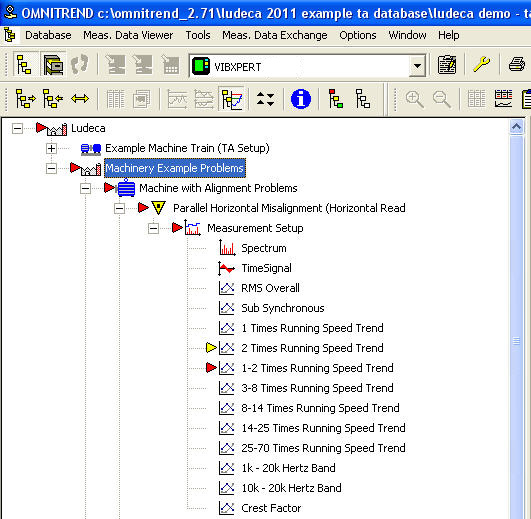A successful condition monitoring program is only as good as the database for it that is configured by the end-user. A condition monitoring database should be treated as a living entity. The database can only grow and fulfill its main objective by constantly having information added to it to continuously strengthen the database.
When creating a new condition monitoring database a lot of unknowns exist about the machinery. The most important piece of information that is vital in vibration analysis is the correct running speed of the machines that are designated for monitoring. Common unknown items might include bearing types and models, the number of vanes or impellers, and gear ratios. Most of the equipment in your facility will need repair over the next few years.
Once the machines have been repaired or internal parts replaced, these unknown items can be identified. It is important to notify the appropriate maintenance personnel to collect this information for you as the opportunity arises in the future. Adding the identified items into the condition monitoring database allows for the vibration analysis to be performed with greater certainty.
Another vital item to add to and update in a condition monitoring database is machinery-specific alarms. Smart alarms have the ability to save you 50% of analysis time when analyzing vibration data. Do you need to look at every spectrum and waveform that is collected every month? With properly set alarms the problem machines can be found a lot more easily by the simple colors assigned when an alarm is triggered. Alarms can be set to automatically trigger when specific fault conditions develop. With a few clicks of the mouse, the machine and measurement that is in alarm can be viewed. Of course, having the proper set alarm levels will be a benefit when looking for machines that have issues. Alarm levels can be obtained from many different sources, but the best alarms are the ones tailored for the specific machine that is being monitored. Alarms need to be tweaked on an annual basis so that a new adaptive alarm can be set for the machines. A four-year-old alarm setup on a machine before it was sent out for repair might not have the best current alarm settings needed for that machine.
LUDECA offers a service in which we can tune up your existing database. This can be done remotely or onsite. A database assessment is completed on your database to make certain proper data is being collected as well as tweak your current alarms as needed. Additional items are also updated and completed. If interested please contact us for more details.
Filed under:
Condition Monitoring by Mickey Harp CRL

